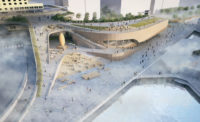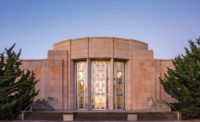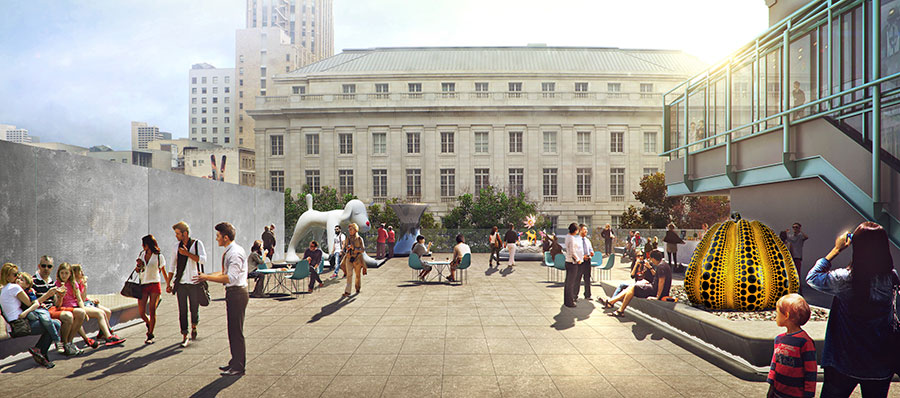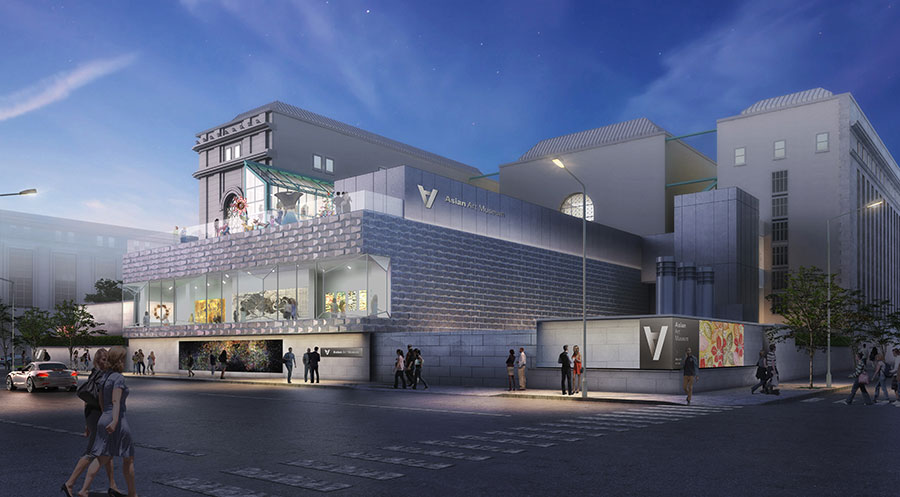Asian Art Museum Releases Renderings of Renovation and Expansion by wHY

The Akiko Yamazaki & Jerry Yang Pavilion (exterior), concept design by wHY, 2017.
Rendering © wHY and Asian Art Museum

Asian Art Museum Larkin Street Lobby, concept design by wHY, 2017.
Rendering © wHY and Asian Art Museum

The Akiko Yamazaki & Jerry Yang Pavilion (entrance), concept design by wHY, 2017.
Rendering © wHY and Asian Art Museum

The Akiko Yamazaki & Jerry Yang Pavilion (gallery interior), concept design by wHY, 2017.
Rendering © wHY and Asian Art Museum

The Akiko Yamazaki & Jerry Yang Pavilion (gallery interior), concept design by wHY, 2017.
Rendering © wHY and Asian Art Museum

The Akiko Yamazaki & Jerry Yang Pavilion (lobby interior), concept design by wHY, 2017.
Rendering © wHY and Asian Art Museum

Asian Art Museum Bowes South Court, concept design by wHY, 2017.
Rendering © wHY and Asian Art Museum

Koret Education Center, concept design by wHY, 2017.
Rendering © wHY and Asian Art Museum

Koret Education Center, concept design by wHY, 2017.
Rendering © wHY and Asian Art Museum

Koret Education Center, concept design by wHY, 2017.
Rendering © wHY and Asian Art Museum

Asian Art Museum Art Terrace, concept design by wHY, 2017.
Rendering © wHY and Asian Art Museum

The Akiko Yamazaki & Jerry Yang Pavilion (exterior), concept design by wHY, 2017.
Rendering © wHY and Asian Art Museum












Architects & Firms
The Asian Art Museum in San Francisco has unveiled a renovation and expansion plan by Los Angeles-based wHY Architecture. Located in the city’s Beaux Arts Civic Center, the design for the 12,000-square-foot addition draws inspiration from Asian and European art and architecture. The new pavilion tops an earlier expansion designed by Gae Aulenti, and itself will be capped by a large art terrace, extending the indoor–outdoor experience of the museum.

Rendering © wHY and Asian Art Museum
Facing Hyde Street, the new pavilion will be clad in 18- by 30-inch ceramic tiles printed with a digital pattern that will give the panels the appearance of a beveled edge, adding a sense of dimension to the facades. “The pixelated detail is reminiscent of Renaissance rustication,” said Kulapat Yantrasast, founder of wHY. “It’s a contemporary technology applied to an ancient material.” He noted that the design of the facade also relates to the museum’s renowned ceramics collection.
Projected to cost $25 million, wHY’s addition will include a large column-free gallery with an 18-foot-high ceiling for temporary exhibitions and performances. Temporary walls will be reconfigured for changing exhibitions, and the space will be designed with flexible light, sound, and temperature control technologies to provide a wide range of displays and events. “The new pavilion needs to be state of the art,” Yantrasast said, “to support their program now and in the future.”
The new art terrace will extend from the Great Hall of the original Beaux Arts building and will include places to display sculpture, as well as areas for video installations and performances.

Rendering © wHY and Asian Art Museum
The project will allow the museum to show more of its permanent collection while expanding opportunities for new types of exhibitions and other programs. “By situating Asian art within a global context, juxtaposing art of the past and present and introducing exciting ideas through exhibitions and programs, the transformed museum will offer visitors fresh, meaningful perspectives on the culture of the Bay Area, world history, and current events,” said Jay Xu, the museum’s director and CEO.
wHY’s plan also includes updated classrooms and educational facilities, improved circulation, and other upgrades. “We believe that by alleviating certain pressure points, the entire museum will be transformed,” Yantrasast said.
Construction will begin in early 2018 and is expected to be complete by summer 2019.














